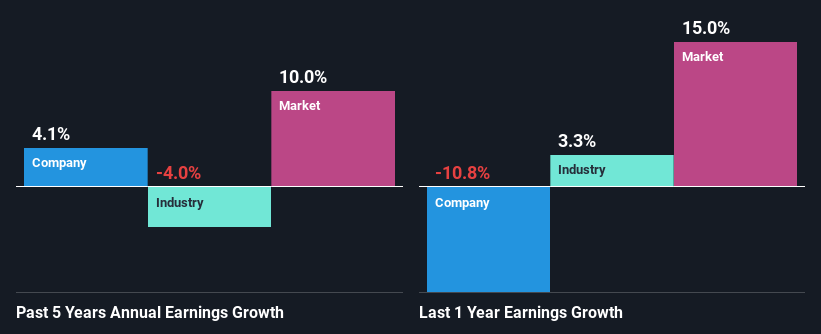Is Coca-Cola HBC AG's (LON:CCH) Stock's Recent Performance A Reflection Of Its Financial Health?
Coca-Cola HBC's (LON:CCH) stock is up by 2.2% over the past three months. Since the market usually pay for a company’s long-term financial health, we decided to study the company’s fundamentals to see if they could be influencing the market. Particularly, we will be paying attention to Coca-Cola HBC's ROE today.
Return on equity or ROE is an important factor to be considered by a shareholder because it tells them how effectively their capital is being reinvested. Put another way, it reveals the company's success at turning shareholder investments into profits.
View our latest analysis for Coca-Cola HBC
How To Calculate Return On Equity?
The formula for ROE is:
Return on Equity = Net Profit (from continuing operations) ÷ Shareholders' Equity
So, based on the above formula, the ROE for Coca-Cola HBC is:
14% = €467m ÷ €3.3b (Based on the trailing twelve months to July 2022).
The 'return' refers to a company's earnings over the last year. Another way to think of that is that for every £1 worth of equity, the company was able to earn £0.14 in profit.
What Has ROE Got To Do With Earnings Growth?
Thus far, we have learned that ROE measures how efficiently a company is generating its profits. Depending on how much of these profits the company reinvests or "retains", and how effectively it does so, we are then able to assess a company’s earnings growth potential. Generally speaking, other things being equal, firms with a high return on equity and profit retention, have a higher growth rate than firms that don’t share these attributes.
Coca-Cola HBC's Earnings Growth And 14% ROE
At first glance, Coca-Cola HBC seems to have a decent ROE. Further, the company's ROE is similar to the industry average of 13%. Coca-Cola HBC's decent returns aren't reflected in Coca-Cola HBC'smediocre five year net income growth average of 4.1%. So, there could be some other factors at play that could be impacting the company's growth. For instance, the company pays out a huge portion of its earnings as dividends, or is faced with competitive pressures.
Given that the industry shrunk its earnings at a rate of 4.0% in the same period, the net income growth of the company is quite impressive.
The basis for attaching value to a company is, to a great extent, tied to its earnings growth. What investors need to determine next is if the expected earnings growth, or the lack of it, is already built into the share price. Doing so will help them establish if the stock's future looks promising or ominous. Is Coca-Cola HBC fairly valued compared to other companies? These 3 valuation measures might help you decide.
Is Coca-Cola HBC Making Efficient Use Of Its Profits?
Despite having a normal three-year median payout ratio of 50% (or a retention ratio of 50% over the past three years, Coca-Cola HBC has seen very little growth in earnings as we saw above. Therefore, there might be some other reasons to explain the lack in that respect. For example, the business could be in decline.
Additionally, Coca-Cola HBC has paid dividends over a period of nine years, which means that the company's management is determined to pay dividends even if it means little to no earnings growth. Based on the latest analysts' estimates, we found that the company's future payout ratio over the next three years is expected to hold steady at 44%. However, Coca-Cola HBC's ROE is predicted to rise to 19% despite there being no anticipated change in its payout ratio.
Conclusion
In total, we are pretty happy with Coca-Cola HBC's performance. Particularly, we like that the company is reinvesting heavily into its business, and at a high rate of return. Unsurprisingly, this has led to an impressive earnings growth. With that said, the latest industry analyst forecasts reveal that the company's earnings are expected to accelerate. To know more about the company's future earnings growth forecasts take a look at this free report on analyst forecasts for the company to find out more.
Have feedback on this article? Concerned about the content? Get in touch with us directly. Alternatively, email editorial-team (at) simplywallst.com.
This article by Simply Wall St is general in nature. We provide commentary based on historical data and analyst forecasts only using an unbiased methodology and our articles are not intended to be financial advice. It does not constitute a recommendation to buy or sell any stock, and does not take account of your objectives, or your financial situation. We aim to bring you long-term focused analysis driven by fundamental data. Note that our analysis may not factor in the latest price-sensitive company announcements or qualitative material. Simply Wall St has no position in any stocks mentioned.
Join A Paid User Research Session
You’ll receive a US$30 Amazon Gift card for 1 hour of your time while helping us build better investing tools for the individual investors like yourself. Sign up here

 Yahoo Finance
Yahoo Finance 
